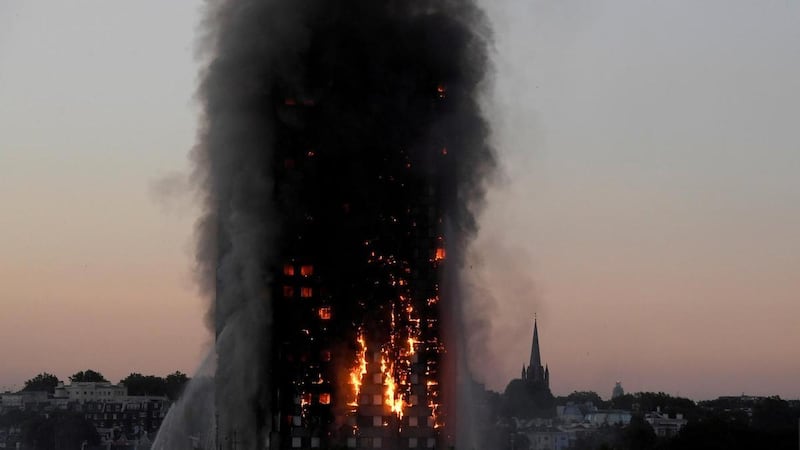Skyscraper cities must better scrutinise the quality of buildings under construction to avoid devastating fires and loss of life.
The warning came at a summit in Abu Dhabi on Tuesday as safety experts called for a global standard in building codes and fire management.
A high profile blaze in Dubai in 2012 has been blamed on combustible, externally fitted cladding, often used for cosmetic purposes.
Material with a polyethylene core was also found to be the catalyst to the tragic Grenfell Tower fire in London last year. The cladding was used to boost the building’s aesthetic and improve energy efficiency.
“Every building using combustible panels in the UAE should be a concern,” said Roy Weghorst, head of regulatory affairs at Kingspan, an international building materials supplier.
“We’ve seen so many examples [of fires] in Dubai, such as the Tamweel Tower, The Torch and the Zen Tower.
“I don’t know officially if they all had these panels, but we can see the evidence from how quickly the fire spread.”
_________________
Read more:
[ Removal of flammable cladding on Palm Jumeirah towers may be replicated across Dubai, say experts ]
[ High-rise escape chute could evacuate Dubai's tall buildings in minutes ]
[ Residents flee blaze in Dubai Marina tower block ]
___________________
The June 2017 Grenfell Tower fire in the Royal Borough of Kensington and Chelsea resulted in the deaths of 72 people.
More than 70 others were also injured in the blaze, while a further 223 managed to escape.
The subsequent Grenfell Inquiry, set up to establish the cause of the tragedy, attributed the fire’s rapid spread to the building’s exterior cladding, a type in widespread use.
Since then, polyethylene-based materials used in construction have been banned under the UAE’s Fire & Life Safety Code.
Tests have also begun across the Emirates to identify any high-rise buildings which have used the cladding to enable suitable retrofits to take place.
In 2012, a fire which swept through Tamweel Tower in Dubai left 160 families homeless, with combustible cladding found to be the accelerant.
Then in August last year, residents of the city’s Torch tower also had a lucky escape when a blaze - caused by a discarded cigarette - damaged more than 64 floors. This year, a fire at the Zen Tower in Dubai saw five floors effectively destroyed.
Fortunately, however, outcomes at each UAE incident were drastically different from Grenfell, with effective evacuation procedures allowing residents to escape.
But experts addressing delegates at the Safety Design in Buildings conference on the Jumeirah Saadiyat Island resort in Abu Dhabi, said a “global consistency” in construction and fire safety standards was still needed.
“Over the past two decades in the UK we have become complacent about fire safety,” said fire investigator Gary Strong, a chartered building surveyor calling for a global approach to safety standards.
“Attitudes towards fire risk changed after Grenfell and we have been looking closely at fire protection measures.
“We do have an issue of fire safety, and there should be some global consistency with building codes and their fire safety management.
“Up to 70 per cent from global wealth comes from property, and we are seeing tall towers added to the skyline of Dubai and Abu Dhabi.”
Andy Dean, head of facades at WSP, a US engineering and design company, said an effective safety code should contain measures like fire stops, sprinklers and cladding which did not pose a fire risk.
Experts also said it was critical nations worked together to implement effective fire codes and share safety information. A 43-country coalition of bodies backed by the UN to support international fire safety regulations was established in July this year.
“We can do tests that can remove a 50mm diameter core from cladding for testing," said Mr Dean.
"It takes about a week to chemically analyse the core to look for polymer content and its fire retardant nature.
“There is no reason why this can’t be done on every building in the UAE."







